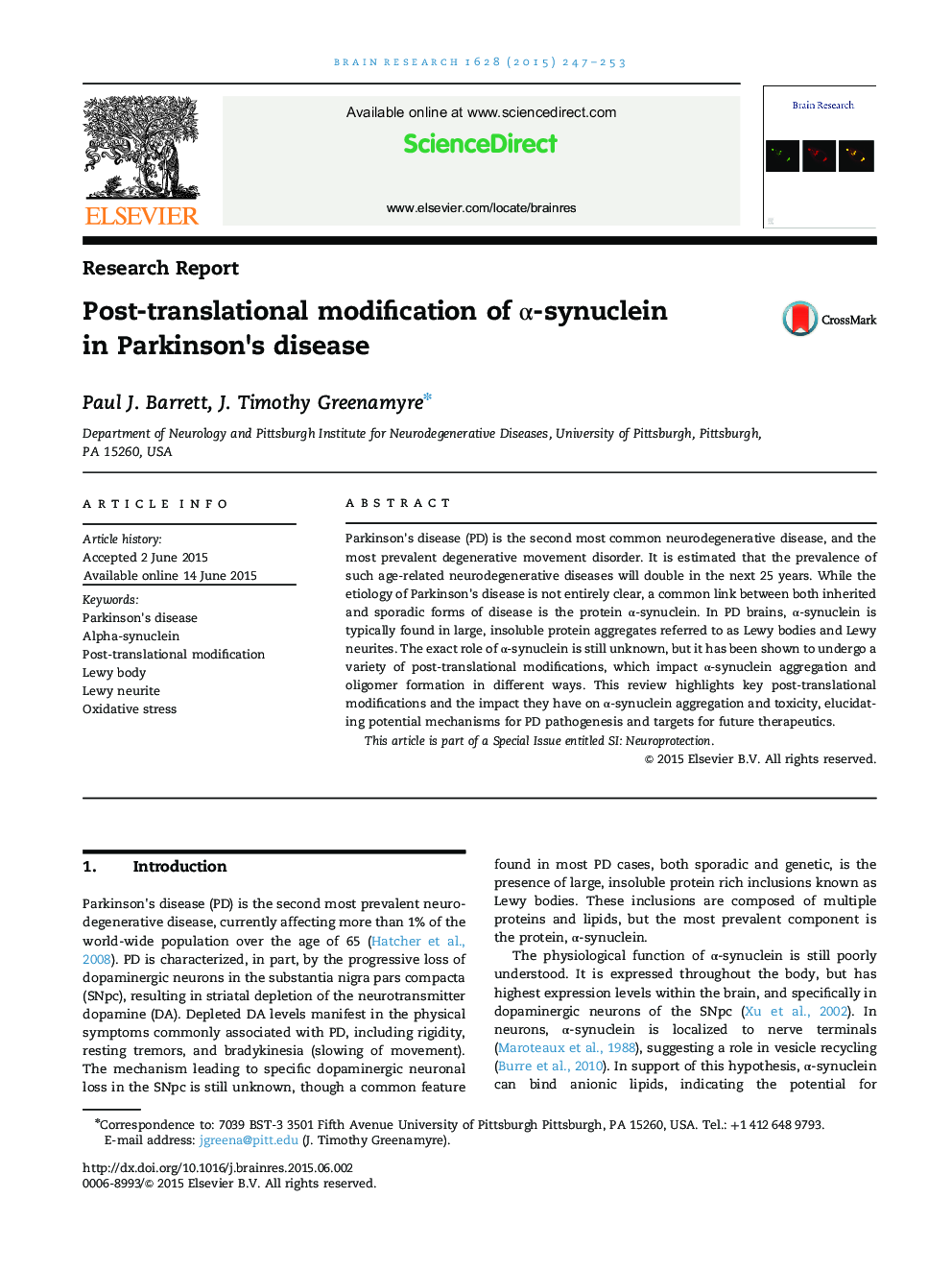| کد مقاله | کد نشریه | سال انتشار | مقاله انگلیسی | نسخه تمام متن |
|---|---|---|---|---|
| 6262661 | 1292373 | 2015 | 7 صفحه PDF | دانلود رایگان |

- Post-translational modifications of α-synuclein are believed to play important roles in the pathogenesis of Parkinson׳s disease.
- Phosphorylation of α-synuclein promotes oligomer assembly.
- Nitration of α-synuclein inhibits fibril formation and decreases lipid binding.
- Dopamine modification of α-synuclein stabilizes oligomer formation.
Parkinson׳s disease (PD) is the second most common neurodegenerative disease, and the most prevalent degenerative movement disorder. It is estimated that the prevalence of such age-related neurodegenerative diseases will double in the next 25 years. While the etiology of Parkinson׳s disease is not entirely clear, a common link between both inherited and sporadic forms of disease is the protein α-synuclein. In PD brains, α-synuclein is typically found in large, insoluble protein aggregates referred to as Lewy bodies and Lewy neurites. The exact role of α-synuclein is still unknown, but it has been shown to undergo a variety of post-translational modifications, which impact α-synuclein aggregation and oligomer formation in different ways. This review highlights key post-translational modifications and the impact they have on α-synuclein aggregation and toxicity, elucidating potential mechanisms for PD pathogenesis and targets for future therapeutics.This article is part of a Special Issue entitled SI: Neuroprotection.
Journal: Brain Research - Volume 1628, Part B, 2 December 2015, Pages 247-253